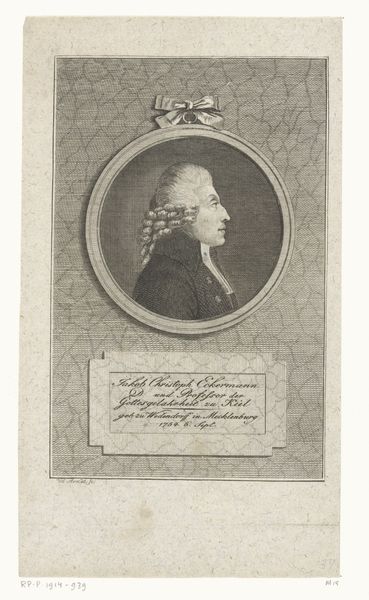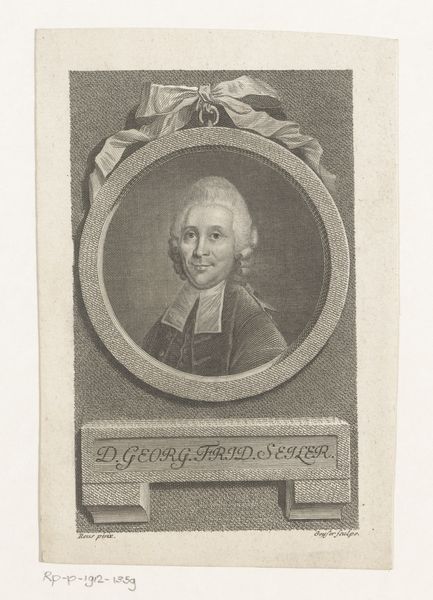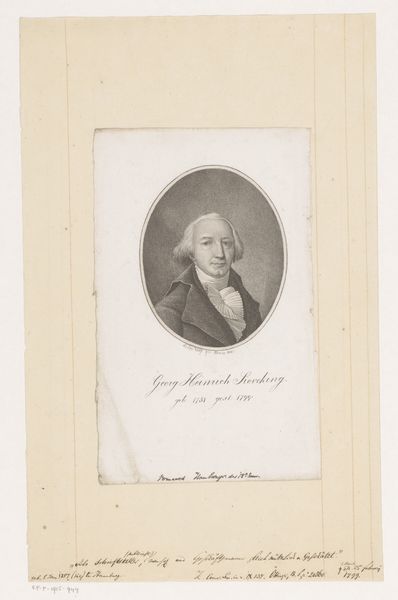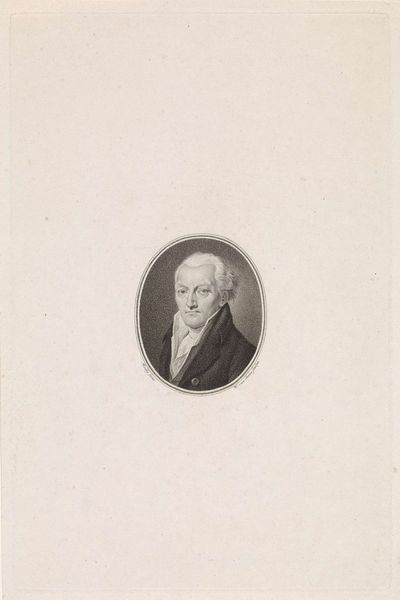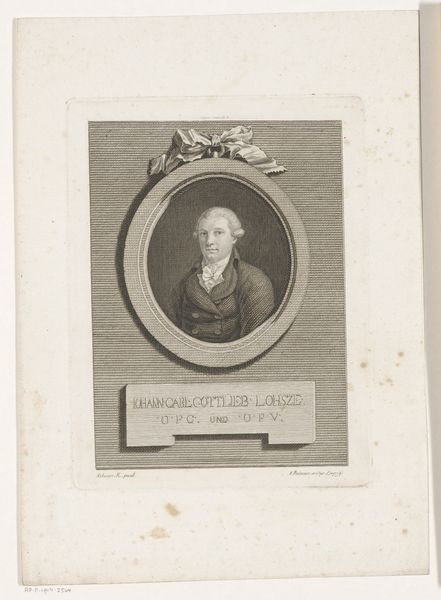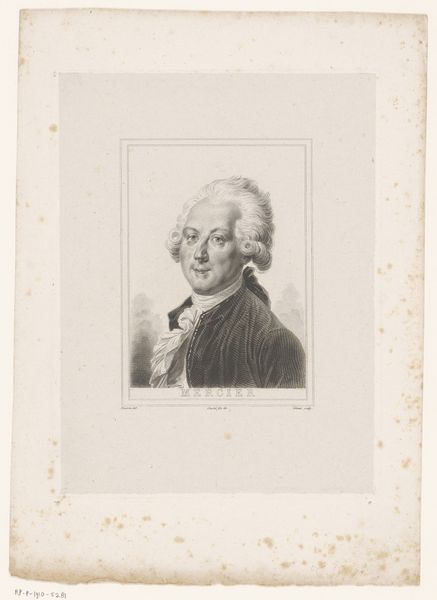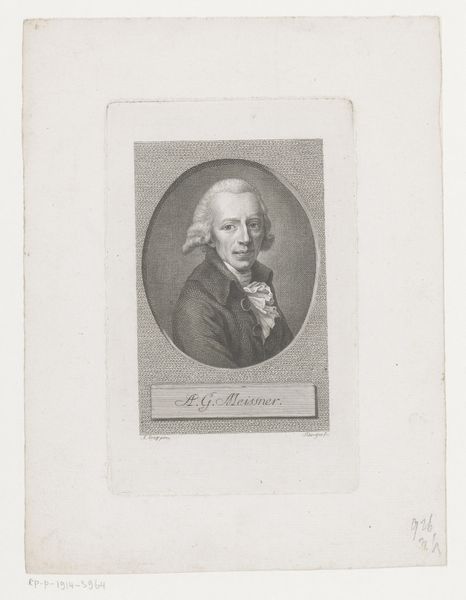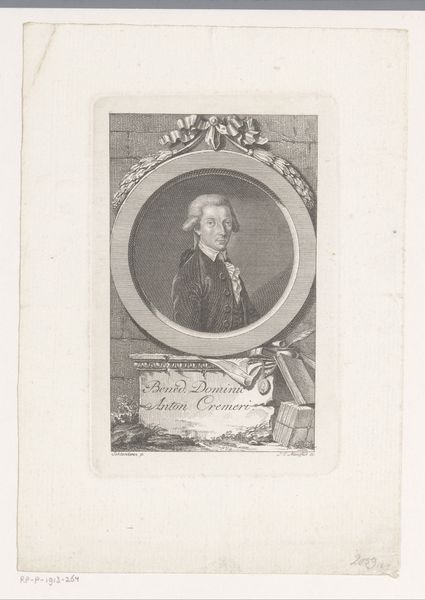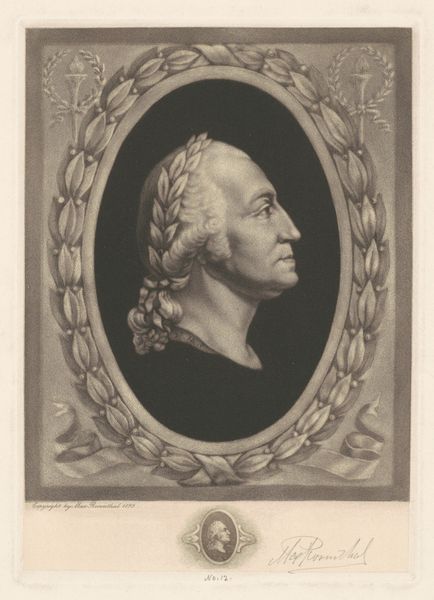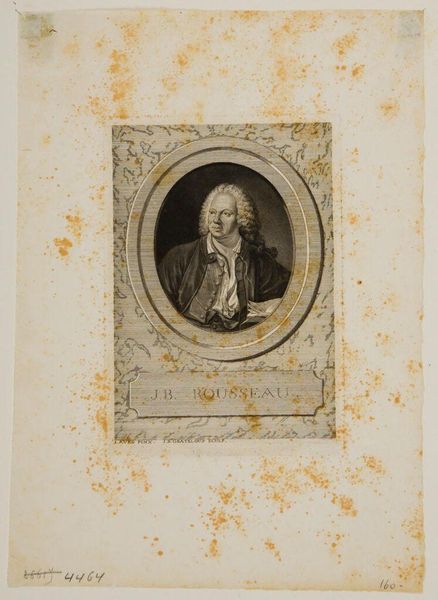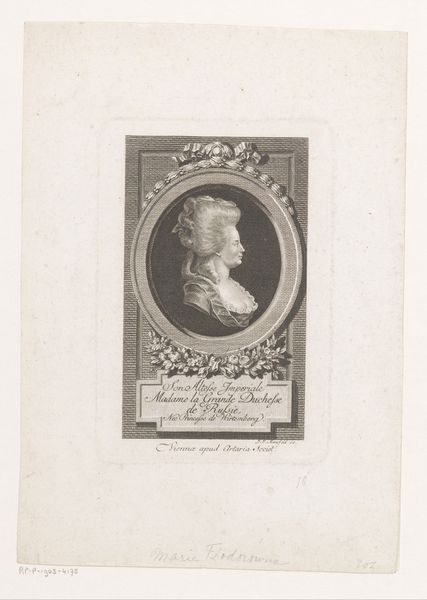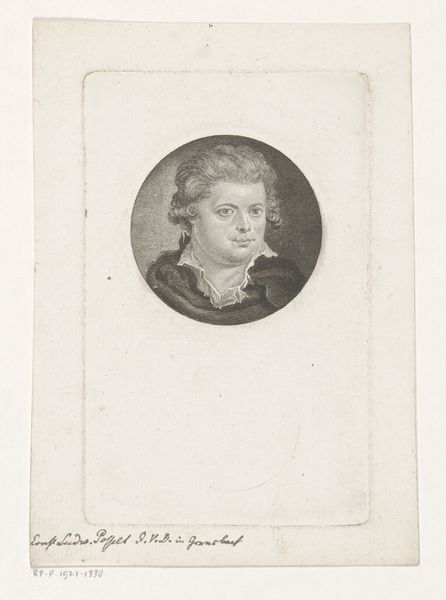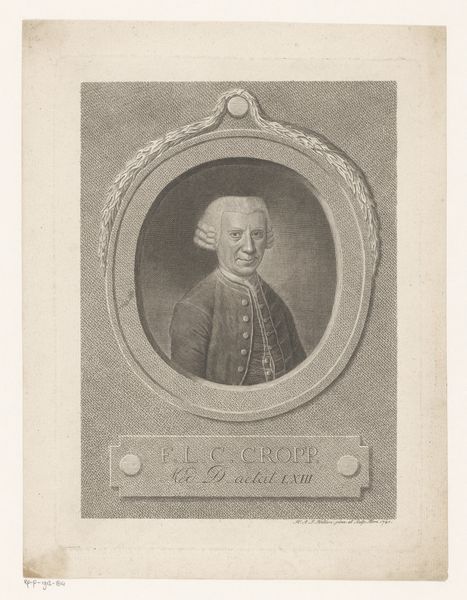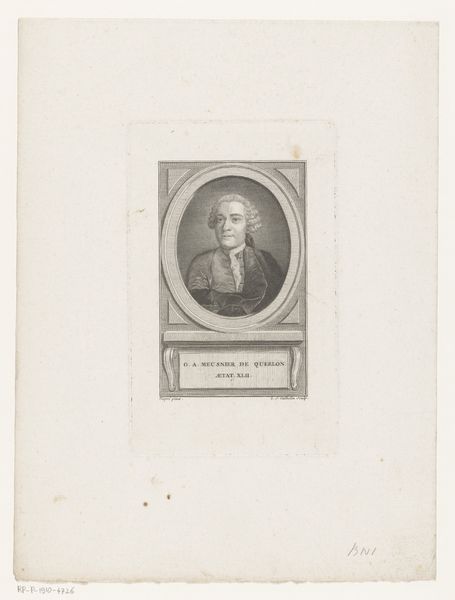
painting, oil-paint
#
portrait
#
neoclacissism
#
painting
#
oil-paint
#
academic-art
#
miniature
#
realism
Dimensions: height 6.7 cm, width 4.3 cm, depth 0.7 cm
Copyright: Rijks Museum: Open Domain
Editor: Here we have a miniature portrait in oil, titled "Portrait of a 73-year-old Man," painted in 1782 by Joseph Marinkel. It's currently housed in the Rijksmuseum. The detailing is striking for such a small piece. What stands out to you in terms of its composition? Curator: The careful balance is noteworthy. Consider the geometry; the oval format constrains the composition, yet within this boundary, the artist achieves a remarkable symmetry. The subject’s head, framed by the wig, nearly fills the upper half, countered by the dark, simple shape of his jacket below. Note also the tonal balance – the light, almost porcelain, treatment of the face against the subdued background. Do you observe how this contrast impacts your reading of the work? Editor: Yes, the light really focuses the attention on his face. The gray backdrop and dark coat, lacking much detail, recede, giving prominence to his expression. I think he almost looks frail, yet his gaze seems intent. Curator: Precisely. The formal elements support that interpretation. The texture of the wig, meticulously rendered, juxtaposes with the smooth, almost featureless jacket, creating a visual hierarchy. The gaze, as you observe, invites the viewer to decode his inner state, a key element in Neoclassical portraiture. Consider how the artist employed semiotics in this work. What could his sternum posture suggest in relation to the social standard? Editor: I hadn't thought about that. So, beyond just being a likeness, the way he's painted contributes to a specific message? Maybe a dignified austerity? Curator: Indeed. The very construction of the image—its balance, its contrasts, and the artist's rendering of texture and tone—shapes the viewer's perception and interpretation. It reveals how artistic decisions contribute to meaning. Editor: This exercise of identifying meaning via aesthetic elements adds layers to appreciating it beyond being just a face from the past.
Comments
No comments
Be the first to comment and join the conversation on the ultimate creative platform.
